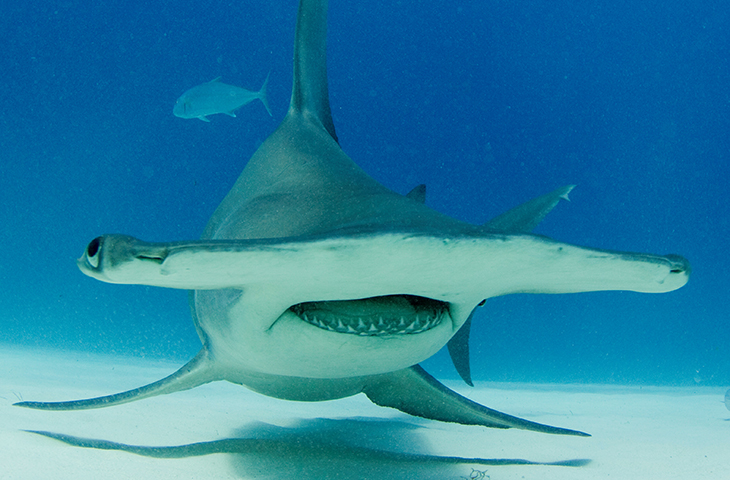New study shows Hammerhead Sharks swim sideways saving energy
- Tuesday, July 26, 2016
A new study in the Department of Life Sciences has discovered that great hammerhead sharks swim whilst rolled onto their side, a technique that is more efficient than traditional upright swimming.

Roehampton zoologist, Dr Nick Payne, and his international team’s study is the first to document the swimming technique of hammerhead sharks and its benefits by using hydrodynamic modelling, a tool to study water in motion which was utilised for investigating the body posture of these sharks.
Before building the model, they collected data of the wild shark’s swimming techniques to observe how they behaved in their natural environment. The team deployed miniature accelerometer loggers and video cameras on hammerhead sharks (Sphyrna mokarran) in the oceans near Australia, Belize and the Bahamas. It was found that all five sharks spent a majority of their time (up to 90%) swimming rolled onto their side at roll angles between fifty and eighty degrees.
The team then conducted hydrodynamic modelling with a physical model of a great hammerhead shark (measuring 64cm, about a fifth of a size of a mature hammerhead) to find out why the sharks were exhibiting this swimming technique in the wild. It was found that these sharks would swim with the the least amount of resistance and therefore expend the least amount of energy when they swim rolled at optimal angles of between fifty and eighty degrees. They would achieve these angles by using their large dorsal fins to generate lift whilst swimming.
Dr Payne said, “We were not expecting to see this unusal swimming behaviour when we first started the study, but it quickly became clear that side-swimming is a common technique within this particular species to overall improve their swimming performance. As these sharks are quite rare, it highlights how much we still need to learn about our ocean’s predators and also how important it is to protect these great sharks.”
To find out more, read the full article entitled, 'Great hammerhead sharks swim on their side to reduce transport costs' published in Nature Communications. See a video of the shark's fin here.
The Department of Life Sciences at the University of Roehampton offers outstanding undergraduate courses in Zoology and Biological Sciences.
